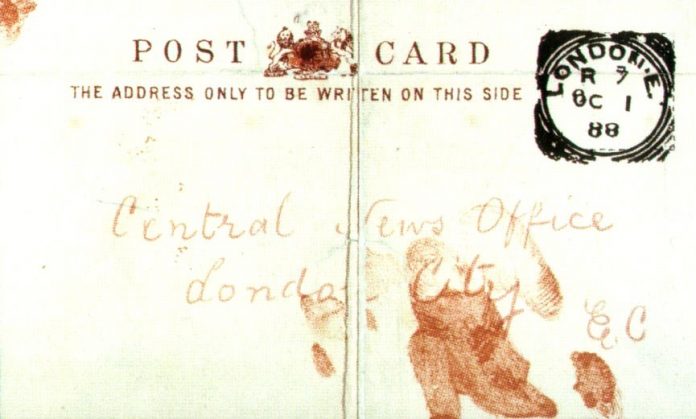A forensic linguist from The University of Manchester who analysed letters supposedly signed by Jack the Ripper has concluded that two of the most famous examples were written by the same person.
The Whitechapel murders that terrorised London in 1888 are still remembered thanks to the legend of Jack the Ripper, who was never caught.
In addition to the gruesomeness of the murders, Jack the Ripper’s name and persona were popularised by more than 200 letters which were received following the murders. These letters are essentially what made him famous, and it has often been suggested that they were written by journalists to sell more newspapers.
Most of the letters signed ‘Jack the Ripper’ were – and still are – regarded as hoaxes. After the first four were received, the police decided to publish them, after which hoaxers began to send copycat letters claiming to be written by him. Therefore, forensic linguist Dr Andrea Nini decided to focus on two of the earliest letters – the ‘Dear Boss’ letter, in which the Jack the Ripper name was first written, and the ‘Saucy Jacky’ postcard.
He used modern techniques to analyse the letters, which uncovered certain shared distinctive linguistic constructions, such as the use of the phrasal verb to keep back (to withhold), in two of the most iconic early texts. He also found evidence that a link exists between these letters and another of the key texts in the case, the ‘Moab and Midian’ letter.
“My conclusion is that there is very strong linguistic evidence that these two texts were written by the same person. People in the past had already expressed this tentative conclusion, on the basis of similarity of handwriting, but this had not been established with certainty. I also found evidence that could link the author of these two letters to the so-called ‘Moab and Midian’ letter, which some people believe was a hoax created by the Central News Agency of London.”
“In addition to the historical value of my findings, they could help forensic linguists to better understand the important issue of individuality in linguistic production. Since all the hoaxers tried to mimic the style of the original ‘Jack the Ripper’, we can use the database of the letters to understand how people fake writing style – and how successful they are at imitation. The results indicate that it is very difficult to do so.”







